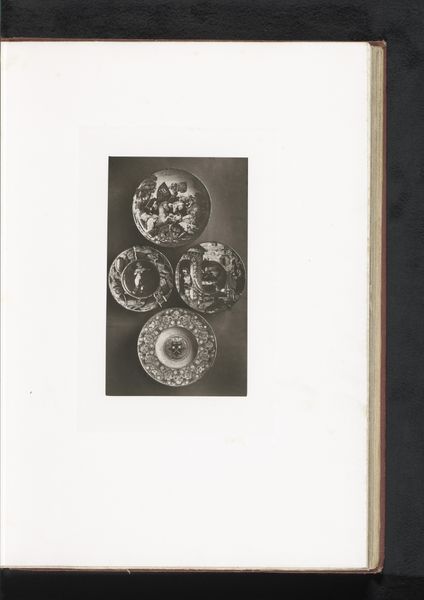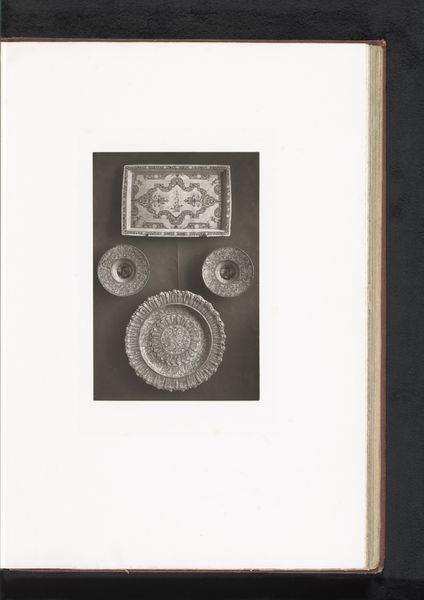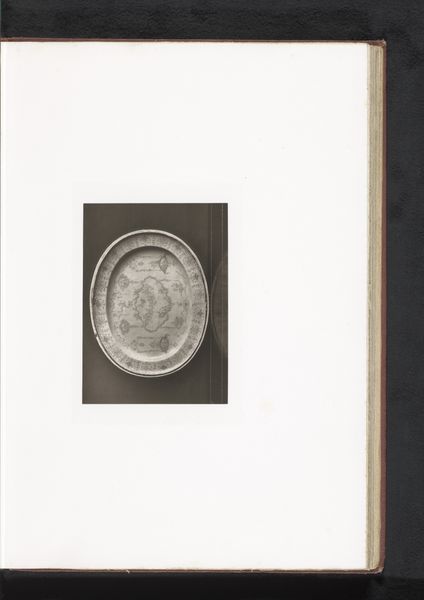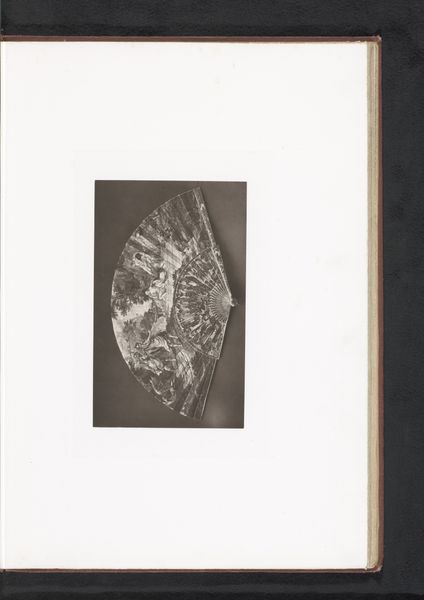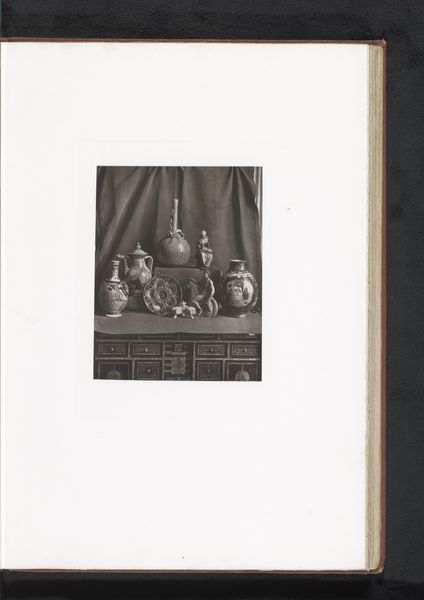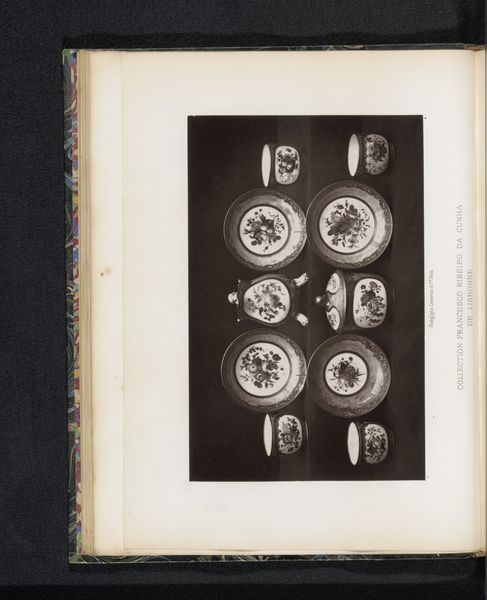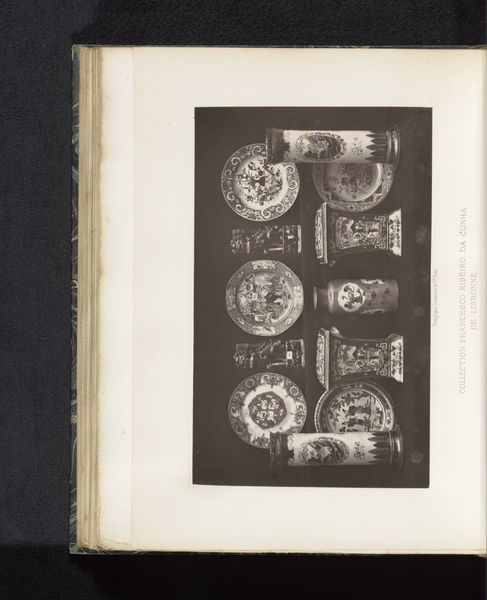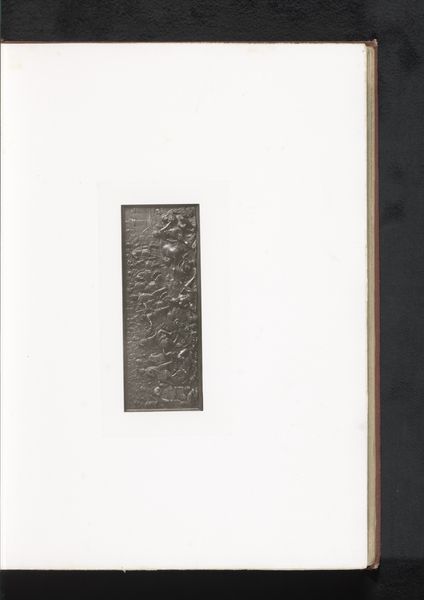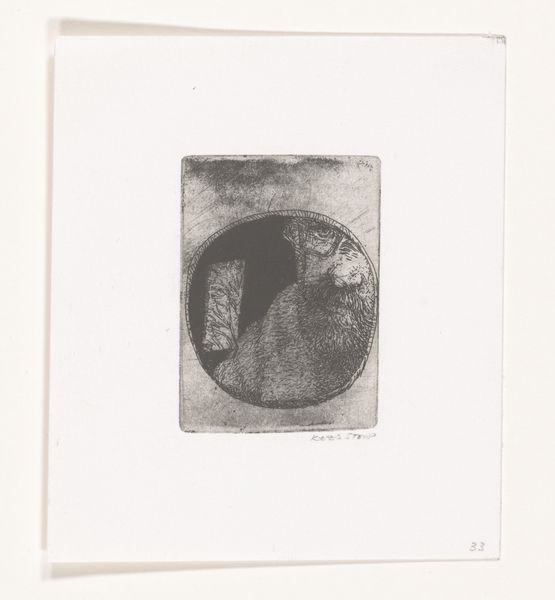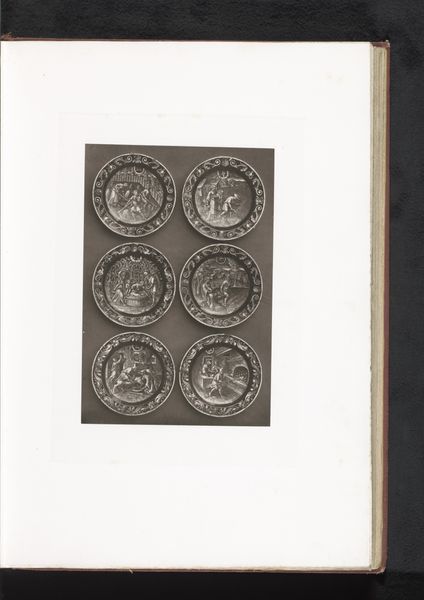
Vier gedecoreerde schalen van Italiaans aardewerk, opgesteld tijdens de Exposition Rétrospective van 1873 in Tours, Frankrijk 1873
0:00
0:00
print, ceramic, photography, earthenware
#
16_19th-century
# print
#
ceramic
#
photography
#
earthenware
#
history-painting
#
academic-art
#
decorative-art
Dimensions: height 198 mm, width 183 mm
Copyright: Rijks Museum: Open Domain
Curator: What a fascinating image. This is a photograph of "Vier gedecoreerde schalen van Italiaans aardewerk, opgesteld tijdens de Exposition Rétrospective van 1873 in Tours, Frankrijk," dating from 1873. The artist, Gabriel Blaise, captured these earthenware dishes exhibited at a retrospective. They really speak to the era, don’t they? Editor: My first impression is of austerity, a muted documentation of craft. There’s an almost unsettling formality about it; they’re clearly meant to showcase artistic skill and also to imply status. It seems to hint at colonial influence, even from just a glance. Curator: Absolutely, I see that too. The circular form itself is so ancient, think of mandalas or shields. Notice the layering within each plate’s decoration, tiny vignettes within borders. Each image seems to allude to narratives we might know if we examine them carefully: mythologies, history-paintings or perhaps idealized scenes from literature or history? Editor: It certainly feels performative. While this retrospective was staged in Tours, the objects come from Italy, creating a layered geographical dynamic. These dishes carry complex identity politics and underscore the power dynamics implicit in the era’s global trade and collecting. Curator: Indeed, one also cannot help but think of the historical baggage involved when nations exhibit craft production. Consider all the hands that touched this object before it became a decorative art piece on display. In its translation to a photo in this historical document, these utilitarian and decorative objects were lifted up to "high art". Editor: The decision to photograph these, likely destined for middle- and upper-class consumption, also says so much. These plates signify aspirations, stories they aim to imbue on everyday existence. What statements did they seek to declare to dinner party guests as courses were served and completed on these decorative ceramics? Curator: These symbols, once active and participatory, freeze-framed here in black and white by the photographer, reflect the visual lexicon, and I mean cultural memory we hold. History continues to permeate and re-assert. We, today, are just now parsing them anew, perhaps understanding what Gabriel Blaise, the artist, meant to capture. Editor: Exactly. It invites critical reflection, acknowledging its presence at an intersection of aesthetics, societal structures, and implicit bias, and I thank you for discussing this further! Curator: My pleasure, and indeed, it allows us to understand how images always tell a complex story.
Comments
No comments
Be the first to comment and join the conversation on the ultimate creative platform.

